Encourage pollinating insects into your garden by giving them a head-start in spring: here we pick 10 of the best plants for beneficial pollinating insects, that are sure-fire winners for gardeners too
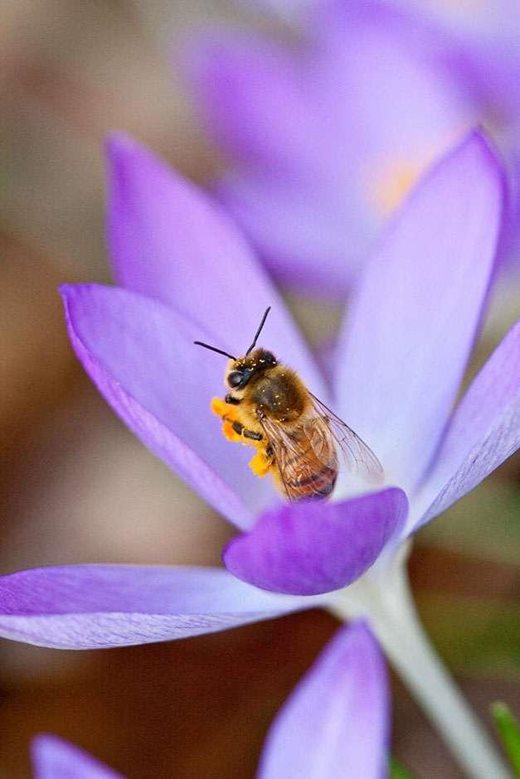 As plants burst into life in spring, so too do the vital pollinating insects that are so important for gardeners and farmers. Many are driven to replenish their dwindling food stores and feed their growing brood. Honeybees that utilised honey reserves throughout winter can now range for several miles looking for energy-boosting nectar. At this time of year, a queen can be laying 2,000 eggs a day and colonies burgeon.
As plants burst into life in spring, so too do the vital pollinating insects that are so important for gardeners and farmers. Many are driven to replenish their dwindling food stores and feed their growing brood. Honeybees that utilised honey reserves throughout winter can now range for several miles looking for energy-boosting nectar. At this time of year, a queen can be laying 2,000 eggs a day and colonies burgeon.
In early spring, queen bumblebees scout about for nesting sites. They fill wax nectar pots to sustain them while they incubate their brood, and later feed their larvae with nectar and pollen. The solitary mason bee, often seen searching for water on newly-dug plots, is an important pollinator of early-blossoming fruit trees such as peaches. In tubular nests, eggs are laid on a stash of pollen and nectar in each cell. Hoverflies are also on the wing in April. While the larvae of some species are useful predators of garden pests, adults require nectar to survive.
Helen Bostock, Senior Horticultural Advisor, frequently draws on the RHS Plants for Pollinators lists to recommend plants that sustain pollinating garden visitors through the year. Here she chooses pollinator-friendly RHS Award of Garden Merit plants with a selection of flower shapes and colours (including both natives and non-natives), to provide pollen and nectar for insects in spring.
H = Hardiness rating
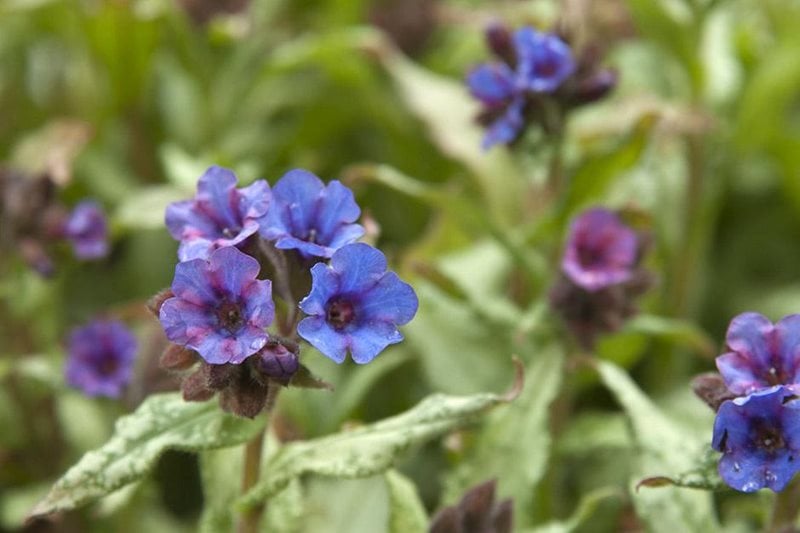
Pulmonaria 'Diana Clare'
Lungwort selection 'Diana Clare' shimmers with its silvery-marked leaves making it attractive as groundcover beneath spring-flowering shrubs. Over a long periods it bears short-tubed, purple flowers in dusky calyces. These are visited by emerging queen bumblebees and foraging solitary bees. Performs best in moisture-retentive soil in semi shade. Height to around 30cm (12in). H6.
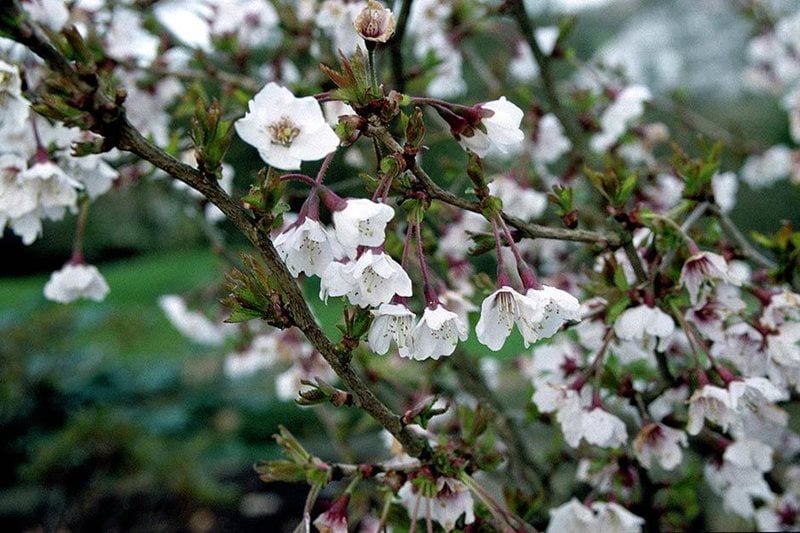 Prunus incisa 'Kojo-no-mai'
Prunus incisa 'Kojo-no-mai'
A medium-sized shrub with a rounded habit and twisted stems, the Fuji cherry has hanging clusters of pink buds held on red stalks. These open to white single blossoms and provide a food source for pollinators. The oval, serrated leaves show good autumn colour. It prefers sun or semi shade and a free-draining site that does not dry out. Height to around 2.5m (8ft), but with summer pruning, shrubs may be kept smaller. H6.
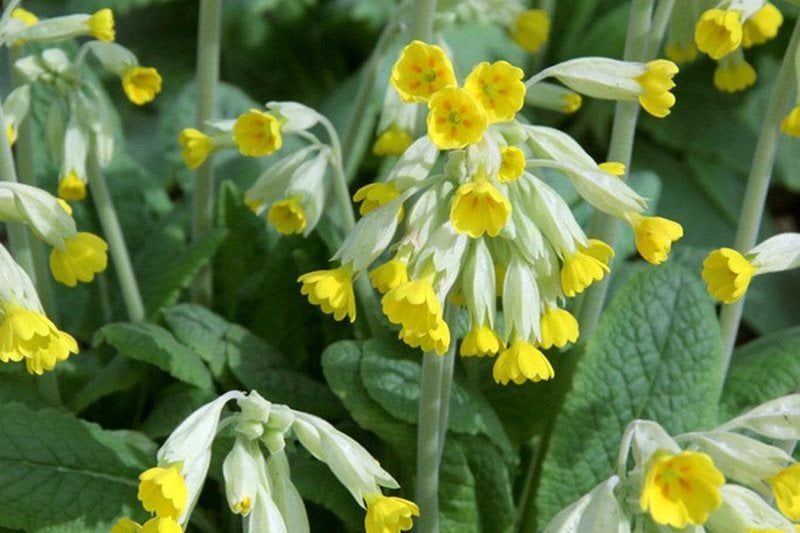 Primula veris
Primula veris
A native of grasslands, hedgrows and woodland clearings, especially on chalk, cowslips send up multiple flowering stems from leafy rosettes. These bear hanging clusters of warm yellow flowers in April and May. Occasionally, naturally occurring red or orange-flowered plants crop up. Cowslips offer nectar bars for long-tongued bees and bee flies, moths and butterflies. Height to around 25cm (10in). H5.
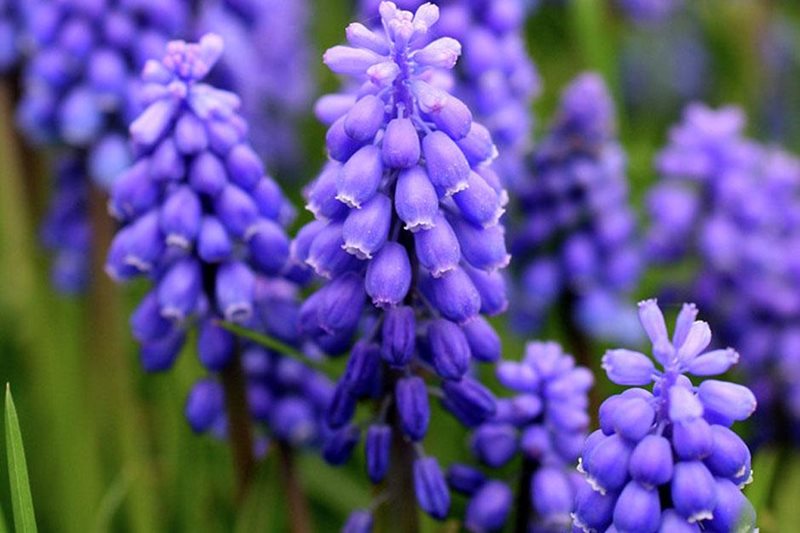 Muscari armeniacum
Muscari armeniacum
Grape hyacinths with their bobbly flowers provide cones of nectar for foraging bees. The Armenian grape hyacinth is a vigorous species with thin, green leaves and dense spikes of white-tipped, deep-violet-blue flowers. It can be used to underplant shrubberies or in containers as a foil for tulips. Height to 20cm (8in). H5.
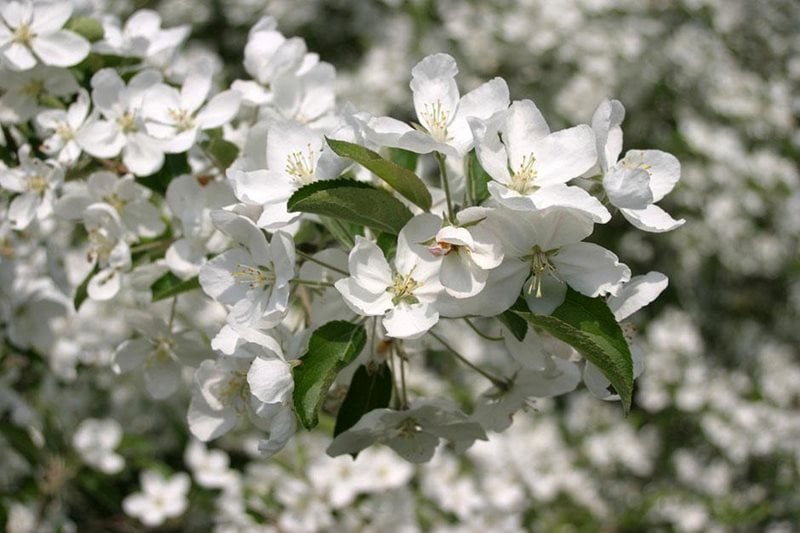 Malus hupehensis
Malus hupehensis
This crab apple becomes an upright tree with a rounded crown as it matures. Single flowers, grouped in clusters, open to white, scented clouds of blossom. Dangling fruits in late summer are cherry-like. Although the Hupeh crab apple is a food source for bees, interestingly, pollinators are not necessary for reproduction. This species produces seed without pollination, so offspring come true from seed even when planted with alongside other species. Eventual height of 5-7m (16–22ft). H6.
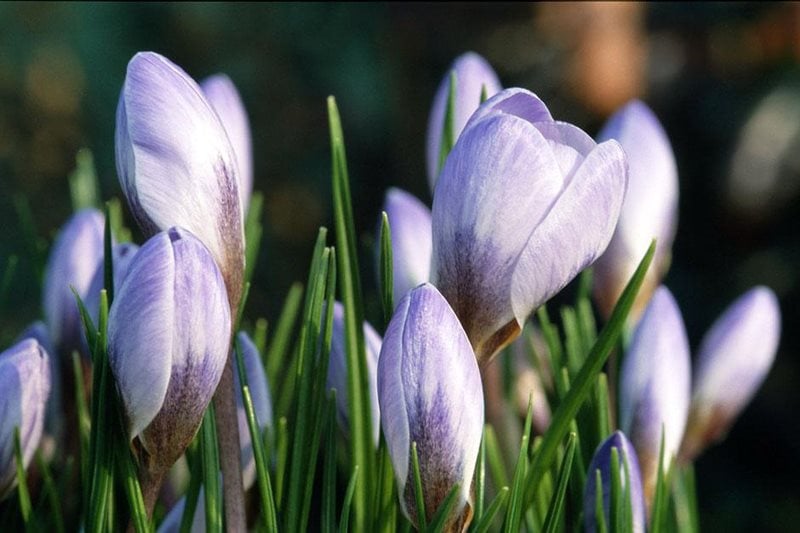 Crocus biflorus 'Blue Pearl'
Crocus biflorus 'Blue Pearl'
Crocus offer an early pollen source to bees and beetles braving warmer spring days. C. 'Blue Pearl' prefers a dry, sunny spot for a summer baking. It may also be naturalised in grass if you're prepared to hold back on your mowing until the foliage has died down. Its scented flowers are lavender-blue with a white interior and yellow throat. Height to 10cm (3in). H5
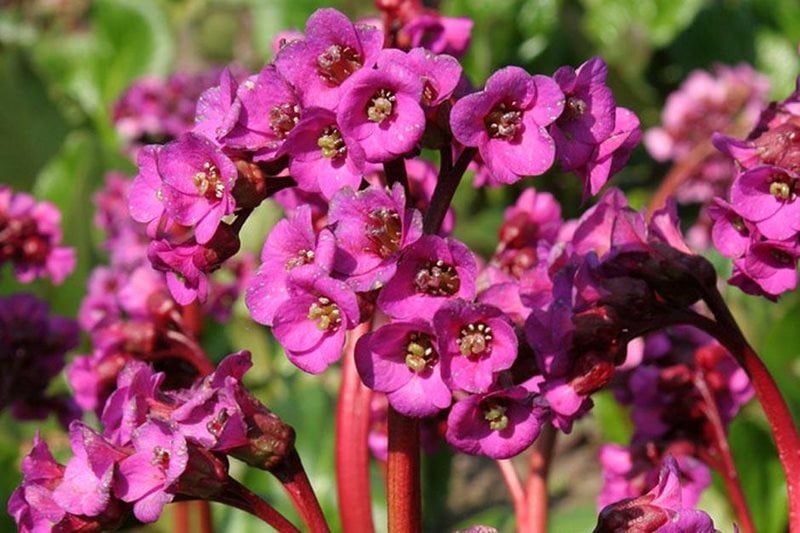 Bergenia 'Eroica'
Bergenia 'Eroica'
B. 'Eroica' offers a jazzy combination of magenta-pink flower clusters and rhubarb-red stems. Bees and other pollinators visit the flowers. Green foliage colours red in winter and shows good frost resistance. Plants spread by rhizomes and make good groundcover in sun or semi-shade. Height to around 30cm (1ft). H7.
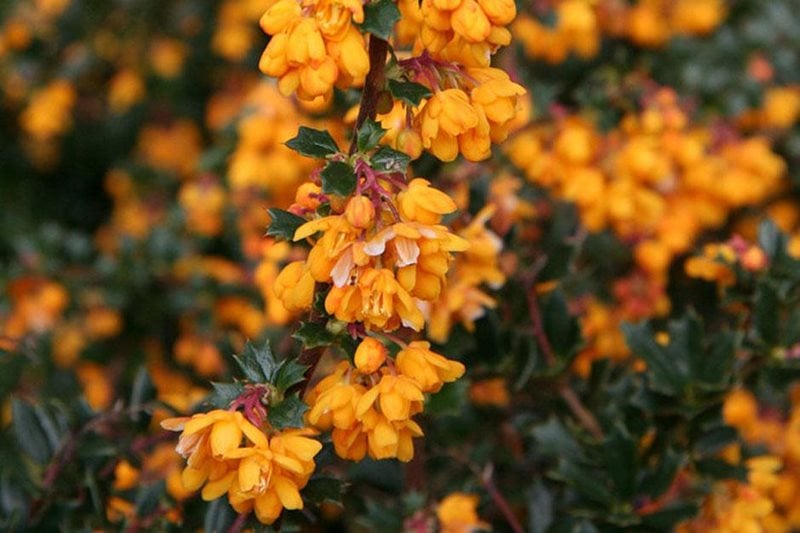 Berberis darwinii
Berberis darwinii
This spring-flowering barberry is showier than most. Its hanging flowers may be small, but en masse their warm-orange colouring is a striking sight. They're set against an evergreen backdrop of small, glossy, dark-green leaves. As well as supporting pollinators, subsequent blue-black berries in autumn are a food source for birds. Height to 2m (6ft). H7.
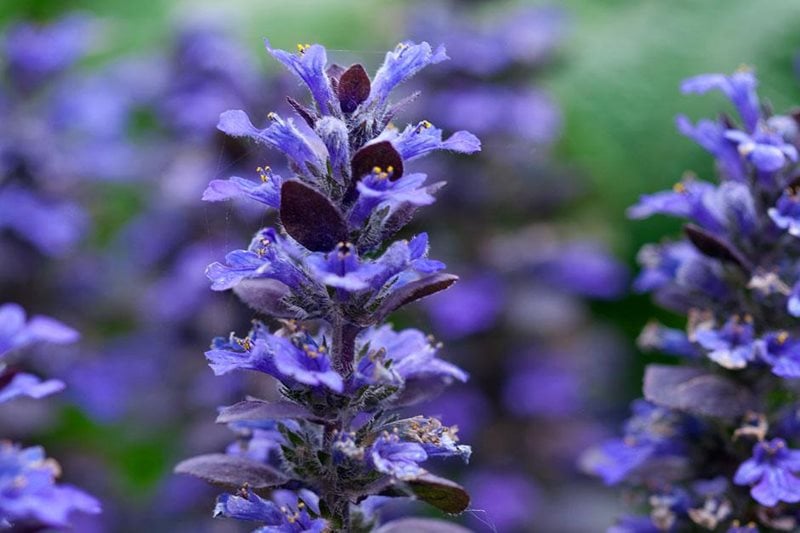 Ajuga reptans 'Catlin's Giant'
Ajuga reptans 'Catlin's Giant'
'Catlin's Giant' is a large-flowered selection of native bugle. It forms attractive mats of groundcover with its glossy, burgundy leaves. Its lipped, bluish-purple flowers in spring and early summer provide landing pads for pollinators such as bees. It's also a one of the food sources for adult orange tip butterflies (Anthocharis cardamines) which emerge in April. Height to 30cm (1ft). H7.
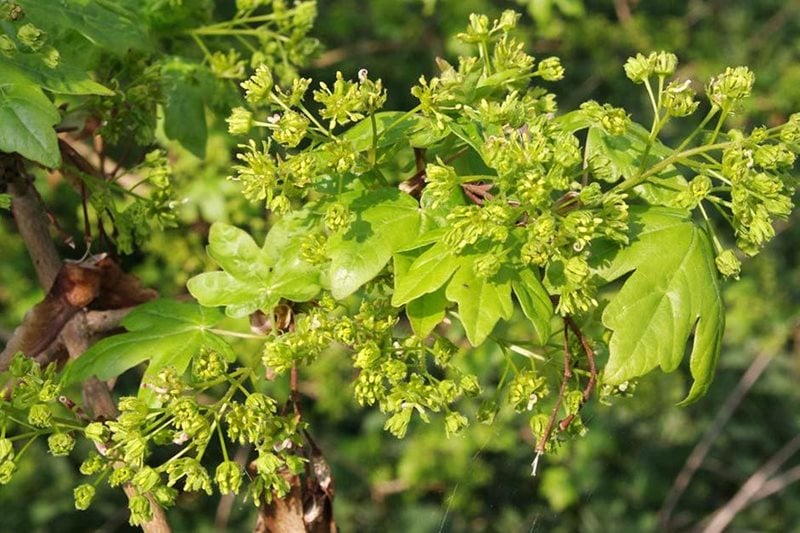 Acer campestre
Acer campestre
The field maple with its corky bark is a British native, useful not only as a tree but as a component in mixed native hedging. These look especially good as rural boundaries blending the garden with the surrounding countryside. The maple's clusters of lime-green flowers offer a food source to bees and hoverflies. These are followed by winged fruit, characteristic of acers. Bluntly-lobed leaves produce yellow autumn colour. Height as a tree to 12m (39ft). H6.
Useful links

